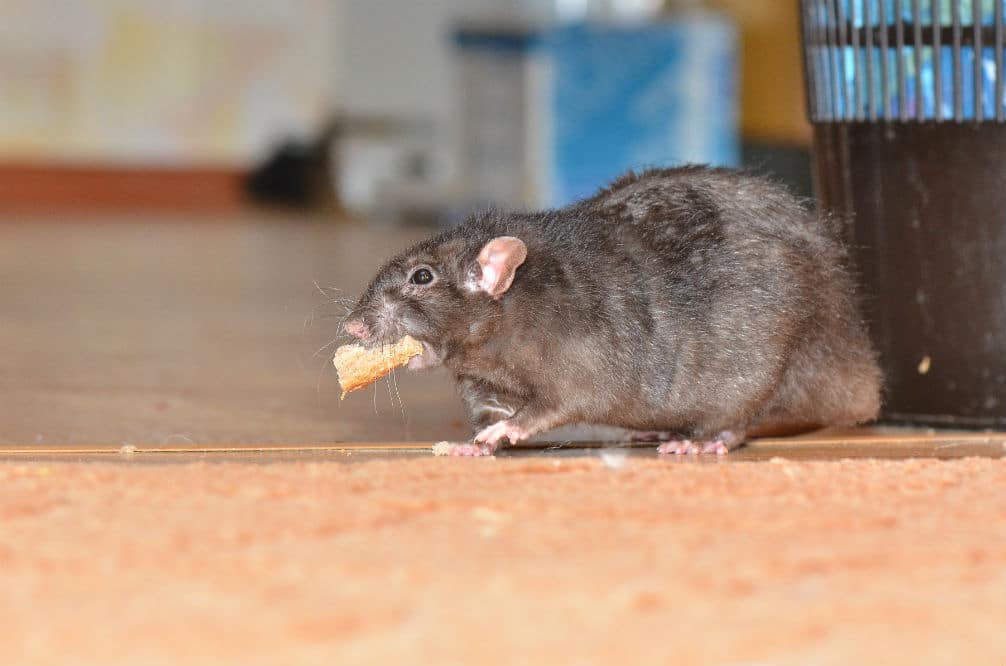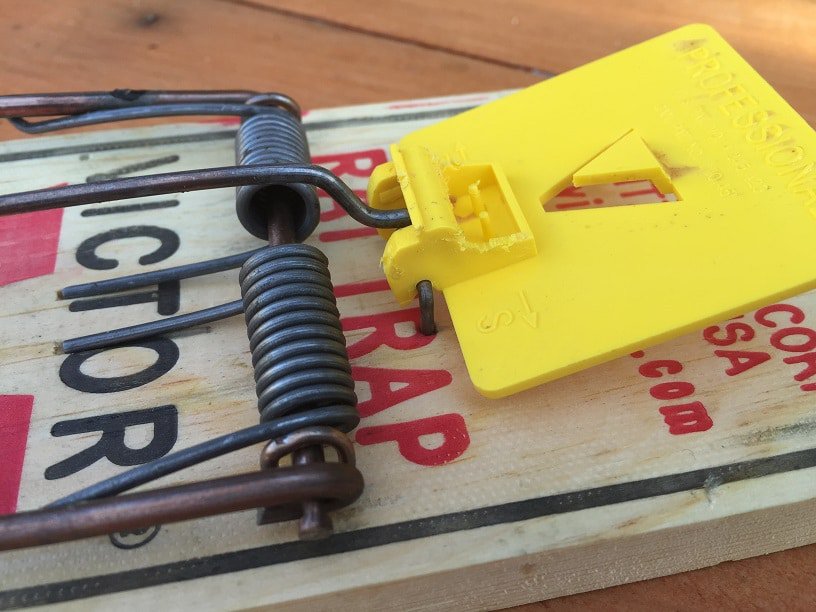Table of Contents

If you’re reading this, then it’s quite possible that you’re currently facing a rat problem and have realized that catching a rat isn’t quite as simple as buying rat traps, loading it with peanut butter, and waiting. So, let’s have a look at some of the things you can do and how to outsmart a rat.
Are Rats Really That Smart?
Ask any pet-rat owner, and they will immediately say yes. Like dogs, rats can be taught to sit up, fetch, and jump through hoops. Unlike dogs though, they can also learn to walk the tightrope, run mazes, and solve puzzles.
In fact, a couple of years ago, a study found that rats could be superior to humans in their cognitive learning abilities. Scientists gave two cognitive learning tasks to a group of lab rats and a group of students.
All subjects were trained to distinguish between “good” and “bad” patterns and were then tested on their ability to apply what they had learned to new types of patterns. The first task was a draw since both the rats and humans performed well. In this first task, the patterns all varied but only in one way (either direction or spacing).
In the second task though, the patterns varied in both direction and spacing, and the rats performed better than the humans. While their thought processes and emotions may not appear to be as complex as ours, their cognitive and learning abilities are excellent, and with this knowledge, it’s easy to understand that if a rat witnesses another rat friend die after eating some peanut butter, then they’re unlikely to make the same mistake.
How to Catch a Smart Rat?
Catching a smart rat is almost the same as catching an ordinary rat, but here are some of the things you need to keep in mind:
1. Know Your Enemy
Understanding what your unwelcome guest wants, habits, preferences, and behavior will all help you to be successful in your rat-catching endeavors. Firstly, you should identify what type of rat you are dealing (Norway or Roof) with so that you know what it prefers to eat.
Norway rats are generally found lower down on a ground level, in burrows, sewers, or basements. They’re big (weighing up to half a kilo) and brown with short stubby noses and small ears and their tail is a bit shorter than their head and body. They will leave stubby-ended droppings around 16 to 18mm in length and are not fussy eaters.
While you want to offer them the “gourmet” option for bait, they will generally eat anything from nuts and dried fruit to raw meat and fish, so just make sure that what you’re offering them is better than what they can get elsewhere.
Roof rats, on the other hand, as their name suggests, are usually found upstairs, in roofs and attics, or they may be living in a tree overhanging your house and just visiting you for food via a small hole in your roof. They’re smaller than Norway rats (around 250g average weight) and are dark brown or black with pointy noses and big ears.
Their tails are also longer than their head and bodies combined, and they leave pointy-ended droppings around 12mm in length. They are a fussier eater than the omnivore Norway rat and prefer grains, nuts, and dried fruit.
2. Learn How Do They Get In
Working out how your rats are getting into the house is vital for several reasons. Firstly, the entrance point makes a great location for trap placement even if this means strapping the trap to a wall or a tree limb. Secondly, you’ll want to close those gaps to prevent any more from coming in. Don’t worry about trapping any in since if they can’t get in and out, then it is easier to shut off their food source, so they become more desperate for the food you’re putting out and may be willing to take more risks.
3. Use Some Rat Trap Strategies
If you feel like you’re going into battle, then you’ve got the right idea. Rats are territorial creatures and quick to notice any changes in their environment (such as rat traps), so you’ll need a good strategy for laying your traps.
- The classic snap trap is preferred by most but make sure the trap is big enough for your prey (a mousetrap will not do) and set more than you think you need.
- Wear gloves when handling the traps and bait, so as not to scare them off with your scent.
- Hide the rat traps in and behind boxes as rats will prefer to feel protected when they feed, and they will feel safer in small dark places. Also, lay them along walls, wires, and near exit and entry points.
- Disguise the traps if you think older rats with learned behaviors might recognize them. You could use a small pile of sawdust or even paint the traps to match your floorboards.
- Experiment with leaving small amounts of different types of food out to find out what your rats like to eat and more importantly are not afraid of eating.
- Pre-bait your traps by putting your traps out with the bait on for several days before actually setting them to snap. It’s even been suggested to have the traps primed but wired open during the pre-baiting period. This will lure a younger “test” rat in and show the older, wiser rats these new objects are “safe.”
- If you’re going to use poison, then you might want to consider a slower-acting one as rats will test out new food sources and wait for a couple of days for results, so if the test rat dies too quickly, then the other rats won’t touch your bait.
Options You Can Do If All Else Fails
Definitely, there would be cases that the tips we have given on how to catch a smart rat that won’t work. If that’s the case, then it would probably be best to get yourself or borrow pets that catch rats!
Either a large, fearless cat or a rat-killing dog. Due to their small bodies and bundles of energy, most the terrier family are known for their rat-catching abilities such as the aptly named rat terrier, the Cairn, Yorkshire, Norfolk, Jack Russell, and West Highland White terriers could all be your next best friend forever.
Of course, if you’re in a rented property, then you might not be allowed to have a pet, or if you might be allergic or just not want one but you continue to be thwarted by these vermin, then maybe it’s time to call in a professional.





